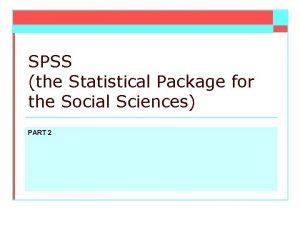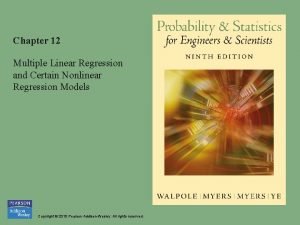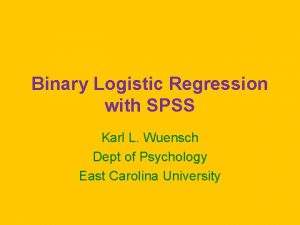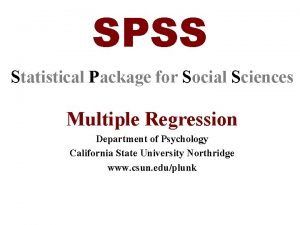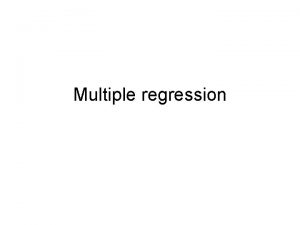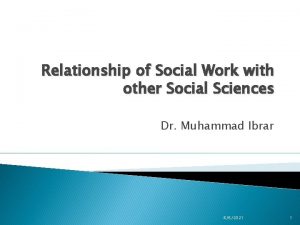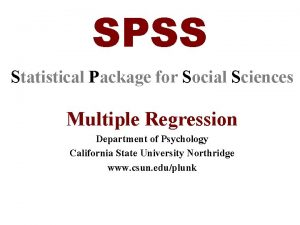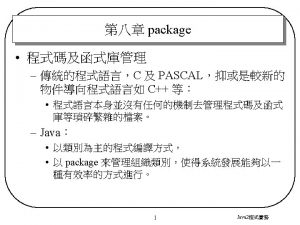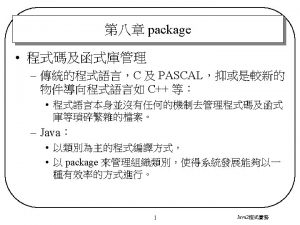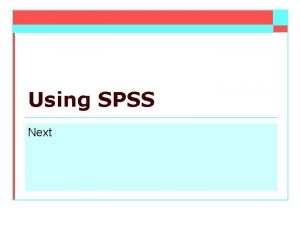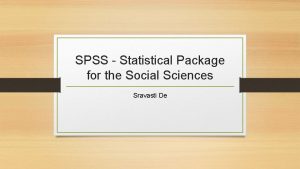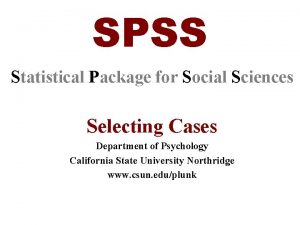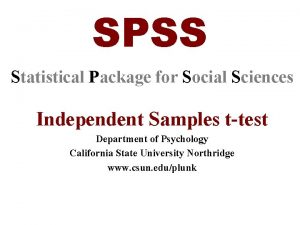SPSS Statistical Package for Social Sciences Multiple Regression










- Slides: 10

SPSS Statistical Package for Social Sciences Multiple Regression Department of Psychology California State University Northridge www. csun. edu/plunk

Multiple Regression v Multiple regression predicts/explains variance in a criterion (dependent) variable from the values of the predictor (independent) variables. v Regressions also explain the strength and direction of the relationship between each IV and the DV (taking into consideration the shared variance between the IVs).

Multiple Regression v Go to “Analyze”, then “Regression”, and then “Linear”

Multiple Regression v Move “Quality of Life” into the “Dependent” box, and move “Intelligence” and “Depression” into the “Block 1 of 1” box. Then click “OK”.

Multiple Regression v Intelligence and depression accounted for significant variance in quality of life, R 2 =. 28, F(2, 2670) = 524. 85, p <. 001. The standardized beta coefficients indicated that intelligence (Beta = -. 19, p <. 001) and depression (Beta = -. 41, p <. 001) were significantly and negatively related to quality of life. Note: Another way this could have been reported is that intelligence and depression accounted for 28% of the variance in quality of life, F(2, 2670) = 524. 85, p <. 001

Hierarchical Multiple Regression v A form of multiple regression in which the contribution toward prediction of each IV is assessed in some predetermined hierarchical order. v Researchers may put in ‘control variables’ first to determine if a set of variables account for significant variance in the DV after controlling for the ‘control variables’. v Or the researchers may have a theoretical or methodological reason to determine the order entry. v In this example, the researcher is going to assess whether intelligence and depression account for significant change in quality of life after controlling for certain demographic variables.

Hierarchical Multiple Regression v Move “Quality of Life” into the “Dependent” box, and move “gender”, “age”, and “maritalsts” into the “Block 1 of 1” box. Then click “Next”.

Hierarchical Multiple Regression v Move “Intelligence” and “Depression” into the “Block 2 of 2” box. Then click “Statistics”.

Hierarchical Multiple Regression v Select “R squared change”, then “Continue” and then “OK”

Hierarchical Multiple Regression v In the first step, the demographic variables did not account for significant variance in quality of life R 2 =. 00 F(3, 2658) =. 12, p =. 95. In step 2, intelligence and depression accounted for significant variance in quality of life, R 2 =. 28, F(2, 2656) = 526. 94, p <. 001. The standardized beta coefficients indicated that intelligence (Beta = -. 20, p <. 001) and depression (Beta = -. 42, p <. 001) were significantly and negatively related to quality of life.
 Statistical package for the social sciences
Statistical package for the social sciences Multiple nonlinear regression spss
Multiple nonlinear regression spss Binary logistic regression spss
Binary logistic regression spss Hierarchical multiple regression spss
Hierarchical multiple regression spss Linear regression spss
Linear regression spss Linear regression assumptions spss
Linear regression assumptions spss Linear regression vs multiple regression
Linear regression vs multiple regression Linear model regression
Linear model regression Natural sciences tok
Natural sciences tok Relationship between social work and other social sciences
Relationship between social work and other social sciences Hierarchical regression
Hierarchical regression
